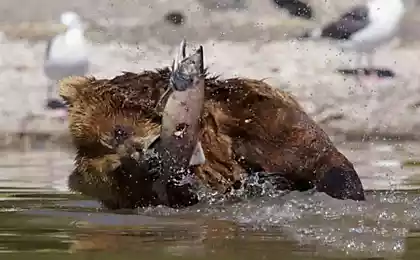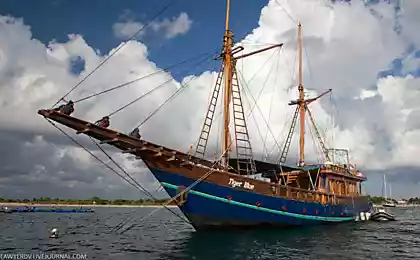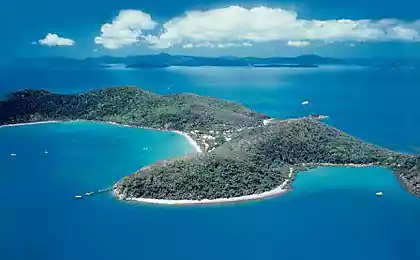1388
Amazing creation
These islands are best known for a large number of native species of fauna and conducted research here Charles Darwin, which was the first impetus for Darwin's theory of evolution to create the origin of species.
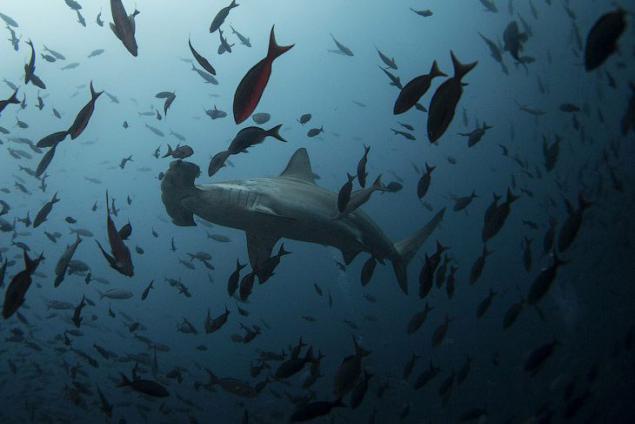
Sea lions swim near San Cristobal. This subfamily eared seals. In nature, the voice of sea lions are hoarse roar.

In 1978 UNESCO declared the island's World Heritage Sites, and in 1985 Biosphere Reserve.
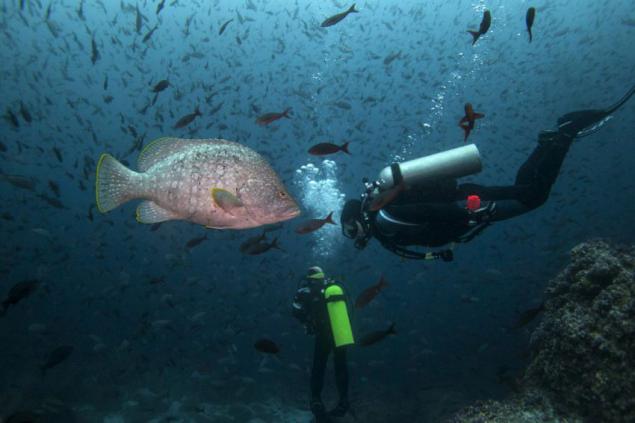
The tuna - fish genus of the family Scombridae. Speed tuna can reach 70 km / h (according to other sources 90), making it one of the fastest fish, along with such as Shark (60 km / h), fish-sailing (109 km / h), black marlin (120 km / h), swordfish (130 km / h). In early January 2013, Japan set a record price for one fish. During the trades, 222-pound Atlantic tuna was sold for $ 1, 8 million US dollars

Turtle Giant Galapagos can weigh up to 250 kilograms and live more than 100 years.

The marine iguana - iguana lives exclusively in the Galapagos Islands. It has a unique ability among modern lizards spend most of their time at sea.
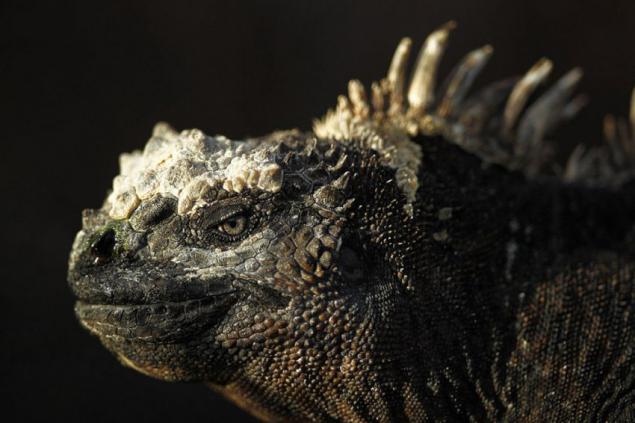
Hammerhead shark. The width of the wings "hammer" is 23-27% of the body length. Due to the large size (the average length of 3, 5 m) and large teeth great hammerhead is certainly capable of inflicting fatal injuries to man. This species has a (possibly undeserved) reputation as an aggressive and the most dangerous of the family of hammerhead sharks.
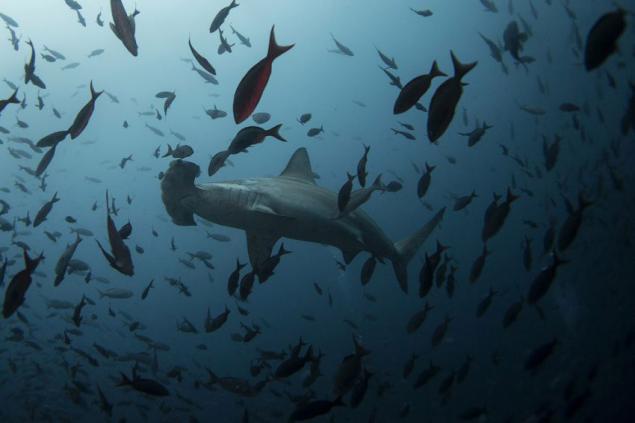
Marine iguanas.

There is evidence that off the coast of New Zealand was caught hammerhead shark length of 7 meters 89 centimeters and a weight of 363 kilograms.
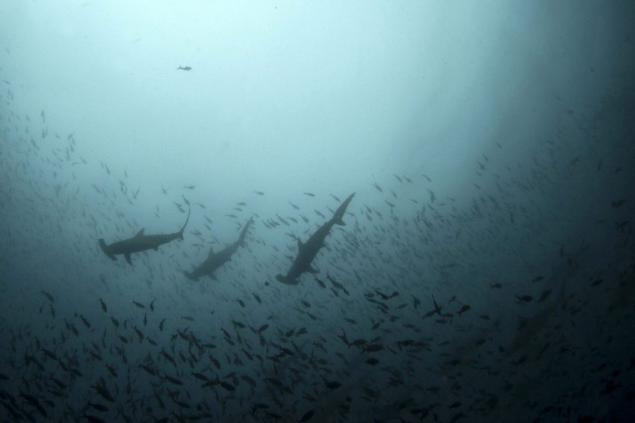
Red crab is one of the most interesting animals of the Galapagos Islands, its image is often found in the series of photos of the archipelago.

Tourists.

Marine iguanas swim undulations body in a horizontal plane. They prefer to dive at low tide, when the water is warmed by the sun as much as possible. Underwater iguanas are able to hold their breath for 1 hour.
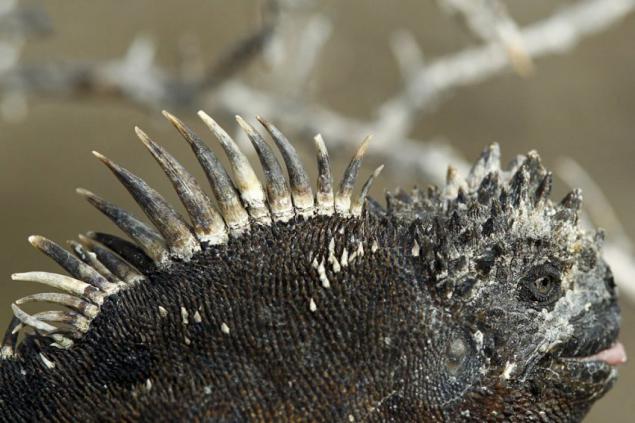
View from the top of Bartolome Island in the Galapagos Islands.
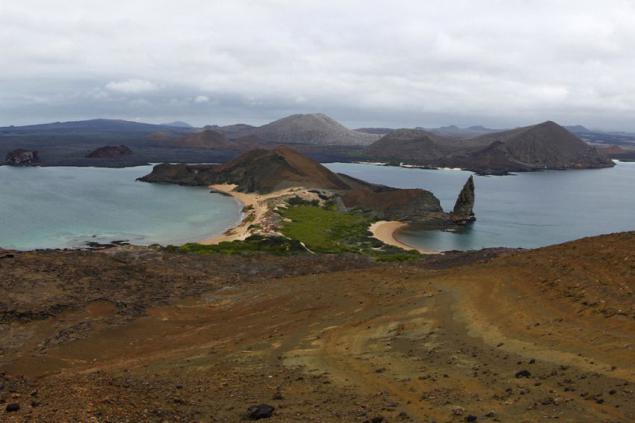
The marine iguana is found on all the islands of the archipelago, mainly on rocky shores, salty marshes and mangroves. Marine iguanas live only on the Galapagos Islands off the coast of South America. Skeleton iguanas.

Currently archipelago still inhabit many foreign animals such as goats, pigs, dogs, rats, mice, cats, sheep, horses, donkeys, cows, poultry, ants, cockroaches and some parasites. Dogs and cats are attacking defenseless wild birds and destroying their nests, catch iguanas, land and sea turtles. Pigs cause even greater harm, destroying the nests of turtles and iguanas, as well as destroying natural vegetation in search of insects and roots. Maybe pigs have caused the disappearance of iguanas on the island of Santiago, although in Darwin's time, they were there.
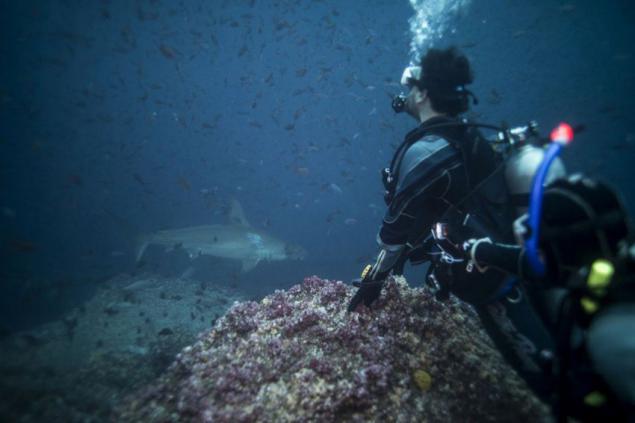
The archipelago has been known by many different names, including the "Enchanted Islands".

Gannet - large birds, freely hovering over the ocean and extract the fish and squid, diving into water from a height of 10-100 m at a depth of 25 m. The feet of birds have a bright blue swimming membranes - the hallmark of this vida.Sinie legs males during mating play a significant role. Females prefer males with painted blue feet and neglected male, legs that look blue-gray.
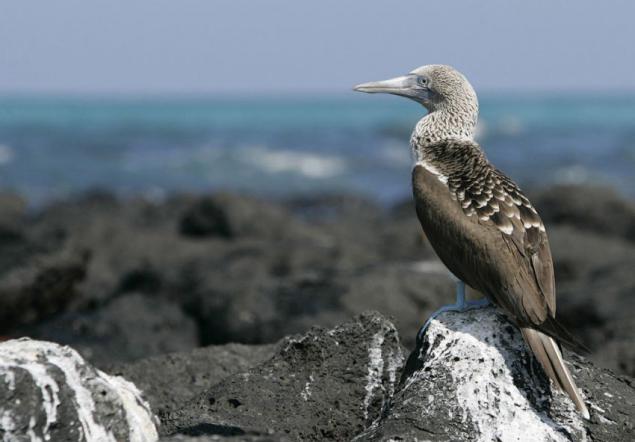
American brown pelican. The smallest of pelicans: the length of its body does not exceed 137 cm and weighs 4 to 5 kg.
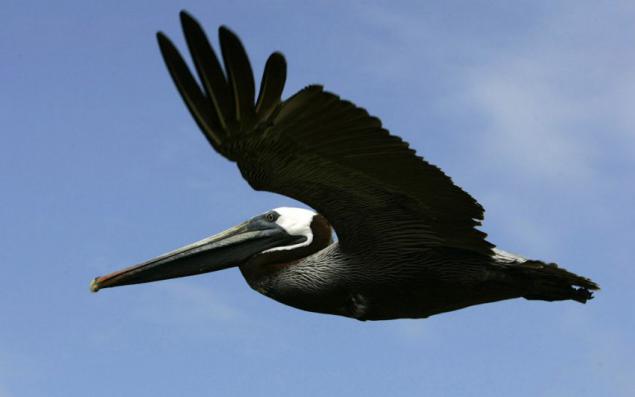
In 1986, the surrounding waters of the total area of square kilometers 70 000 It was declared a "marine protected area", the second largest after the Australian Great Barrier Reef. In 1990, the archipelago has become a haven for whales.

Common Iguana. The body length from nose to tail in adults is usually less than 1, 5 m, although some individuals are known stories of more than 2 m in length and weighing up to 8 kg.

Marine iguanas.
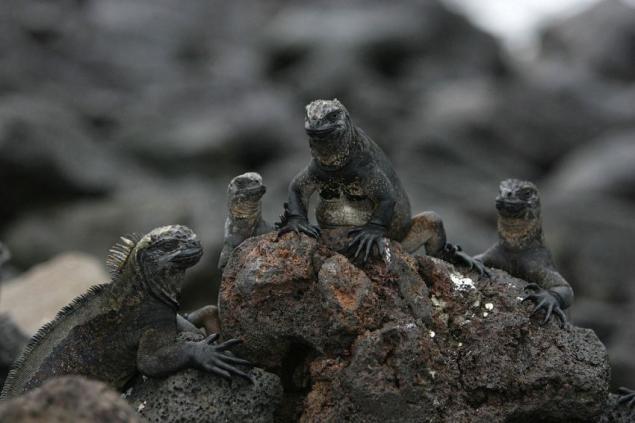
Whale shark. The largest of the currently existing species of sharks, as well as the largest of modern fish. Its size often exceeds 10 m, there are data on 18-meter and 20-meter even copies. The whale shark - a rare species, the size of which had never been great, but in the last decade steadily declining.
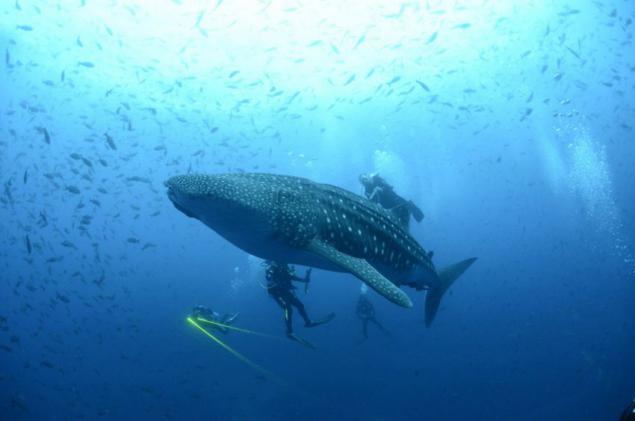
Galápagos tortoise. Endemic to the Galapagos Islands, view endangered. Is the largest currently living tortoises and 10th by weight of all living reptiles, reaching weights of over 400 kg and a length of more than 1, 8 meters.
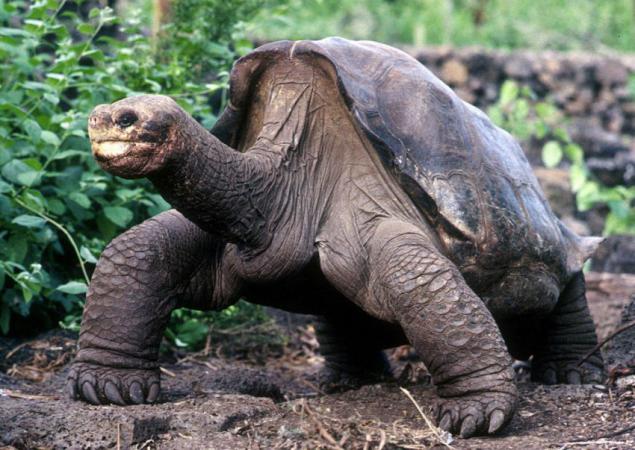
Marine iguanas bask in the sun.
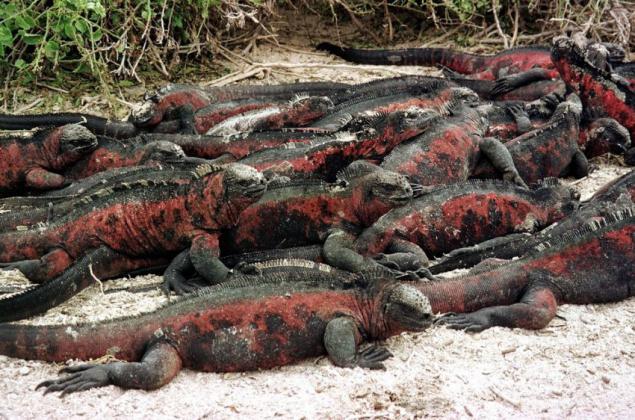
Source: www.tourminal.ru

Sea lions swim near San Cristobal. This subfamily eared seals. In nature, the voice of sea lions are hoarse roar.

In 1978 UNESCO declared the island's World Heritage Sites, and in 1985 Biosphere Reserve.

The tuna - fish genus of the family Scombridae. Speed tuna can reach 70 km / h (according to other sources 90), making it one of the fastest fish, along with such as Shark (60 km / h), fish-sailing (109 km / h), black marlin (120 km / h), swordfish (130 km / h). In early January 2013, Japan set a record price for one fish. During the trades, 222-pound Atlantic tuna was sold for $ 1, 8 million US dollars

Turtle Giant Galapagos can weigh up to 250 kilograms and live more than 100 years.

The marine iguana - iguana lives exclusively in the Galapagos Islands. It has a unique ability among modern lizards spend most of their time at sea.

Hammerhead shark. The width of the wings "hammer" is 23-27% of the body length. Due to the large size (the average length of 3, 5 m) and large teeth great hammerhead is certainly capable of inflicting fatal injuries to man. This species has a (possibly undeserved) reputation as an aggressive and the most dangerous of the family of hammerhead sharks.

Marine iguanas.

There is evidence that off the coast of New Zealand was caught hammerhead shark length of 7 meters 89 centimeters and a weight of 363 kilograms.

Red crab is one of the most interesting animals of the Galapagos Islands, its image is often found in the series of photos of the archipelago.

Tourists.

Marine iguanas swim undulations body in a horizontal plane. They prefer to dive at low tide, when the water is warmed by the sun as much as possible. Underwater iguanas are able to hold their breath for 1 hour.

View from the top of Bartolome Island in the Galapagos Islands.

The marine iguana is found on all the islands of the archipelago, mainly on rocky shores, salty marshes and mangroves. Marine iguanas live only on the Galapagos Islands off the coast of South America. Skeleton iguanas.

Currently archipelago still inhabit many foreign animals such as goats, pigs, dogs, rats, mice, cats, sheep, horses, donkeys, cows, poultry, ants, cockroaches and some parasites. Dogs and cats are attacking defenseless wild birds and destroying their nests, catch iguanas, land and sea turtles. Pigs cause even greater harm, destroying the nests of turtles and iguanas, as well as destroying natural vegetation in search of insects and roots. Maybe pigs have caused the disappearance of iguanas on the island of Santiago, although in Darwin's time, they were there.

The archipelago has been known by many different names, including the "Enchanted Islands".

Gannet - large birds, freely hovering over the ocean and extract the fish and squid, diving into water from a height of 10-100 m at a depth of 25 m. The feet of birds have a bright blue swimming membranes - the hallmark of this vida.Sinie legs males during mating play a significant role. Females prefer males with painted blue feet and neglected male, legs that look blue-gray.

American brown pelican. The smallest of pelicans: the length of its body does not exceed 137 cm and weighs 4 to 5 kg.

In 1986, the surrounding waters of the total area of square kilometers 70 000 It was declared a "marine protected area", the second largest after the Australian Great Barrier Reef. In 1990, the archipelago has become a haven for whales.

Common Iguana. The body length from nose to tail in adults is usually less than 1, 5 m, although some individuals are known stories of more than 2 m in length and weighing up to 8 kg.

Marine iguanas.

Whale shark. The largest of the currently existing species of sharks, as well as the largest of modern fish. Its size often exceeds 10 m, there are data on 18-meter and 20-meter even copies. The whale shark - a rare species, the size of which had never been great, but in the last decade steadily declining.

Galápagos tortoise. Endemic to the Galapagos Islands, view endangered. Is the largest currently living tortoises and 10th by weight of all living reptiles, reaching weights of over 400 kg and a length of more than 1, 8 meters.

Marine iguanas bask in the sun.

Source: www.tourminal.ru





